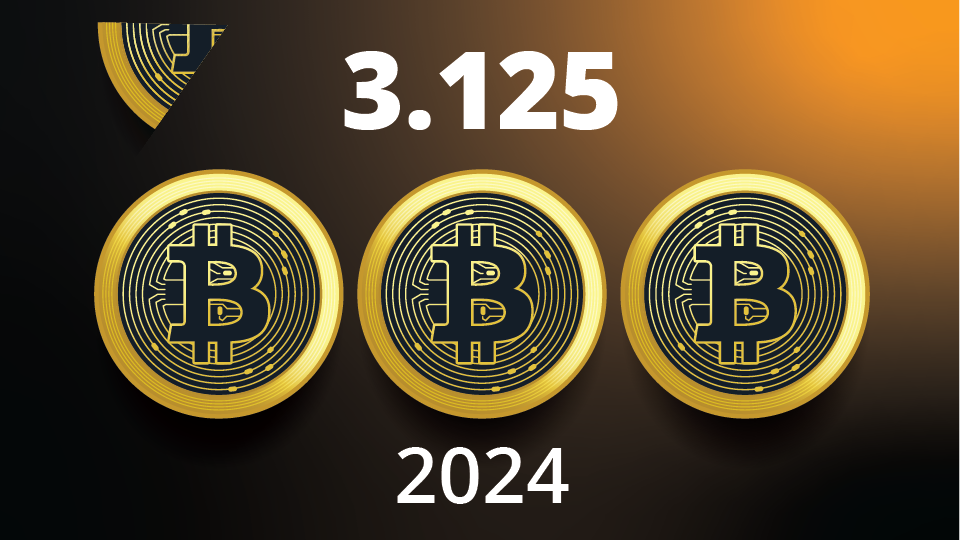Bitcoin Roundtable: Volatility and the Outlook Ahead
July 28, 2022
Read Time 10 MIN
Please note that VanEck may have a position(s) in the digital asset(s) described below.
Bitcoin just experienced its worst quarterly performance since 2011, returning -58% in Q2. In light of Bitcoin’s bear market—and overall negative sentiment pervasive in the crypto space—we asked our digital assets thought leaders to share their insights and outlook.
- Q: What do you attribute Bitcoin’s current bear market to? What do you anticipate is the catalyst for the market to turn around?
- Q: Bitcoin is trading like a risk asset. Do you still consider Bitcoin to be a potential store of value, given 2022’s volatility?
- Q: In your opinion, does Bitcoin trade based on fundamentals (number of users, flows, interest rates, inflation) or technicals (support & resistance, chart patterns)?
- Q: Do non-Bitcoin blowups (TerraLuna, 3AC, Celsius) represent a systemic risk to Bitcoin specifically? Is there a scenario where these non-Bitcoin projects weigh on Bitcoin indefinitely?
- Q: Are retail investors the key to Bitcoin bull markets? If retail steps away, can institutional support carry Bitcoin alone?
- Q: What are you most excited about Bitcoin going forward? What are you most afraid of?
Q: What do you attribute Bitcoin’s current bear market to? What do you anticipate is the catalyst for the market to turn around?
MATTHEW SIGEL, HEAD OF DIGITAL ASSETS RESEARCH: Bitcoin is facing strong headwinds as tightening monetary and fiscal policies are shortening investor time preferences precisely at the midpoint between Bitcoin halving cycles, when the price is most vulnerable to bad news. A sudden change in the macro narrative, such as a sharp decline in energy prices brought on by an end to the war in Ukraine, might reverse this poor performance suddenly. Alternatively, we look to the passage of time to heal bear market wounds as leveraged entities scale back ambitions and the strong consider M&A, as happened the weekend of June 17 when Sam Bankman Fried’s Alameda Research provided debt financing to the Canadian exchange Voyager amidst industrywide forced liquidations of Bitcoin and Ethereum. However, it may take time for sustainable price discovery to emerge given these debt-driven dislocations.
One medium-term catalyst for crypto more generally is the potential for the regulatory environment (or the perception of such) in the U.S. to become less restrictive after the midterm election turns Washington DC’s focus to the 2024 general election. Indeed, with Florida Governor Ron DeSantis now getting better odds in the betting markets than Donald Trump to win the Republican nomination, it is not hard for this analyst to imagine another speculative cycle as we approach the next Bitcoin halving currently scheduled for late May 2024, particularly if sovereign adoption accelerates and the green transition continues to falter. (Gov. DeSantis has said publicly that he is concerned about President Biden’s digital currency-focused executive order; DeSantis also said this year that the Florida government is working on accepting Bitcoin for payments in the state of Florida.)
PRANAV KANADE, PORTFOLIO MANAGER: The marginal buyer of Bitcoin over the last bull cycle has been traditional finance firms and investors who consider BTC as a risk asset (akin to tech equity), rather than a non-sovereign store of value. Fed policy has resulted in most risk asset correlations going to 1 over a recent time period. The current environment feels similar to fall 2018 or spring of 2020 during the COVID-19 pandemic.
In terms of catalysts for a market turnaround, the macro picture is getting better. If interest rates stop going higher and stabilize, equities and other risk assets would also stabilize. There is the potential for a new nation state or cohort of users adopt to BTC for idiosyncratic reasons. Another thing to keep an eye out for is any break in correlations between BTC and risk assets. This could create a reflexive move up.
GABOR GURBACS, DIRECTOR, DIGITAL ASSETS STRATEGY: We believe markets have gotten ahead of themselves, fueled by DeFi-based protocol leverage and an onslaught of token launches with no real use-cases and cash-flow. This wrecked the whole market. We expect the next bull market will be driven by consumer applications and institutions buying for long-term portfolios. It will take a better macro-economic backdrop to get to the next bull market.
Q: Bitcoin is trading like a risk asset. Do you still consider Bitcoin to be a potential store of value, given 2022’s volatility?
KANADE: Yes, but over longer periods of time. When risk asset correlations go to 1, Bitcoin behaves less like a store of value and more like everything else. As more people come into the ecosystem and consider BTC as a finite, scarce asset, we expect it to behave as a store of value. This will come over time as the space matures and BTC’s volatility declines.
SIGEL: The store of value claim can only be made definitively in hindsight over a reasonable time period, which should include at least a full market cycle. By that measurement Bitcoin’s returns since inception, or even since the COVID bottom of March 2020, still appear impressive. Since the March 16, 2020 bottom through March 20, 2022, Bitcoin is up 314% vs. the S&P 500 and Nasdaq Composite, both up 60%, and gold, up 23%. And while Bitcoin’s annualized 30-day volatility, at 77%, exceeds the S&P’s 31% by a wide margin, it is worth noting that crude oil volatility surpassed Bitcoin’s in March and April 2022 by a factor of 2x. With Bitcoin increasingly used as a strategic load balancer for energy producers including Exxon Mobil (link here), we wouldn’t be surprised to see Bitcoin volatility converge with energy, its primary input, over time. This assumes that demand continues to materialize from emerging and frontier countries looking for alternative, energy-backed money to compete with U.S. dollar hegemony. Commodities that can be stored and used later are generally considered “stores” of value, even if they exhibit high volatility.
30-day Annualized Volatility: Bitcoin vs. S&P 500 vs. Crude Oil
Source: Bloomberg. Data as of 7/21/2022.
GURBACS: Bitcoin used to trade as 1/3 store of value and 2/3 tech stock. Today it behaves more like half store of value, half tech stock.
Q: In your opinion, does Bitcoin trade based on fundamentals (number of users, flows, interest rates, inflation) or technicals (support and resistance, chart patterns)?
GURBACS: Bitcoin trades based on macro-economic conditions more than on fundamentals. In my opinion, this is good. User adoption and wallet numbers nevertheless keep growing.
KANADE: Both technical and fundamental analysis influence how Bitcoin trades. In a way, technicals influence fundamentals and vice versa. New entrants want to be a marginal buyer and look at technicals to determine if and when to time entries and exits.
SIGEL: Bitcoin is a chameleon whose correlations have changed dramatically over time depending on macro and regulatory conditions and the underlying pace of adoption. In bull markets, on-chain fundamentals, such as the number of unique addresses and transaction fee growth, can move the price. In bear markets, macro indicators such as economic surprises or interest rate gyrations become more relevant. Technical indicators ($20k Bitcoin, $1k Ethereum) can also matter to the extent market participants use these round numbers as support for leveraged positions. On-chain data we track has been valuable at identifying crucial levels during the LUNA demise and subsequent Ethereum leverage unwind. These data are currently showing a much-improved collateral position in aggregate and little risk of large-scale Bitcoin liquidations above $10,000. Of course, it is also possible that short sellers target this level more aggressively given the transparency of the Bitcoin blockchain.
Q: Do non-Bitcoin blowups (TerraLuna, 3AC, Celsius) represent a systemic risk to Bitcoin specifically? Is there a scenario where these non-Bitcoin projects weigh on Bitcoin indefinitely?
SIGEL: Surveys of DeFi users in the wake of the LUNA collapse still show strong support for decentralized, censorship resistant stablecoins that can be used in DeFi. One of the best-performing smart contract protocols since April has been Tron (TRX), which is currently administering the USDD stablecoin, whose model is similar to LUNA’s (but collateralized with Bitcoin from the start). The crypto community is united in the view that Bitcoin’s immutability make it most suitable as base digital money. Sooner or later, we believe an algorithm may emerge with enough transparency and credibility to execute a Bitcoin-collateralized, dollar-denominated stablecoin, particularly if a “living will” is put in place that would secure an orderly unwind. That said, Bitcoin-backed debt includes zero assumptions that a Federal-reserve like lender of last resort might “bail out” the industry. Therefore, future deleveraging events may also cause prices to over-correct until real buyers emerge.
KANADE: The thing all of these examples have in common is using BTC in some shape or form as collateral for leverage. For example, LUNA used Bitcoin as collateral, 3AC used closed-end funds tied to Bitcoin, and Celsius used wrapped Bitcoin. When people in the ecosystem use collateral as leverage, those blowups will have an immediate effect on price, but it does not change the long-term outlook for Bitcoin as a non-sovereign store of value. These events slow short term adoption, but do not change the end result.
GURBACS: They were a total drag on the whole ecosystem. More transparency is needed into lenders. If lenders adopted the same standards as stablecoins, then we wouldn’t have this bear market. UST wasn’t a stablecoin, in my opinion.
Q: Are retail investors the key to Bitcoin bull markets? If retail steps away, can institutional support carry Bitcoin alone?
KANADE: Bitcoin is not a productive asset, meaning that there is no cash flow to the holder. The ultimate value lies in new capital coming in to invest and hold. In this regard, both retail and institutional investors are equally important as there is a feedback loop between the two. Institutional buyers get in because they see retail buyers as wanting exposure. Retail looks to institutional adoption as a rallying cry for future upward price moves.
SIGEL: One of Bitcoin’s core innovations is the ability to self-custody, which is done via private keys. As long as Bitcoin is held in a self-custody wallet, no entity can censor transactions. This utility is most pronounced for citizens whose governments or banks are hostile to freedom and lack strong institutions to maintain the purchasing power of their fiat. Afghanistan, ranked #20 on Chainalysis’s global crypto adoption index, is a case in point as individuals turned to Bitcoin after the U.S. seized Afghani central bank reserves. Venezuela, ranked #7, is another example with its 686% inflation in 2021. Of the top 20 countries on the Chainalysis list, only seven are members of the G20. Some frontier nations, like Central African Republic and El Salvador, have made Bitcoin legal tender as one way of restoring monetary sovereignty. In other, more repressive states like Nigeria (#6 on Chainalysis’ adoption index), citizens are circumventing government controls using peer-to-peer transactions. In this way, retail and institutional support interact in a complex exhibition of game theory which heretofore has resulted in consistent, though volatile, market share gains for Bitcoin vs. fiat.
| Chainalysis 2021 Crypto Adoption Index (G20 Members in Bold) | |||||
| Ranking for individual weighted metrics feeding into Global Crypto Adoption Index |
|||||
| Country | Index score | Overall index ranking |
On-chain value received |
On-chain retail value received |
P2P exchange trade volume |
| Vietnam | 1.00 | 1 | 4 | 2 | 3 |
| India | 0.37 | 2 | 2 | 3 | 72 |
| Pakistan | 0.36 | 3 | 11 | 12 | 8 |
| Ukraine | 0.29 | 4 | 6 | 5 | 40 |
| Kenya | 0.28 | 5 | 41 | 28 | 1 |
| Nigeria | 0.26 | 6 | 15 | 10 | 18 |
| Venezuela | 0.25 | 7 | 29 | 22 | 6 |
| United States | 0.22 | 8 | 3 | 4 | 109 |
| Togo | 0.19 | 9 | 47 | 42 | 2 |
| Argentina | 0.19 | 10 | 14 | 17 | 33 |
| Colombia | 0.19 | 11 | 27 | 23 | 12 |
| Thailand | 0.17 | 12 | 7 | 11 | 76 |
| China | 0.16 | 13 | 1 | 1 | 155 |
| Brazil | 0.16 | 14 | 5 | 7 | 113 |
| Philippines | 0.16 | 15 | 10 | 9 | 80 |
| South Africa | 0.14 | 16 | 18 | 16 | 62 |
| Ghana | 0.14 | 17 | 32 | 37 | 10 |
| Russian Federation | 0.14 | 18 | 8 | 6 | 122 |
| Tanzania | 0.13 | 19 | 60 | 45 | 4 |
| Afghanistan | 0.13 | 20 | 53 | 38 | 7 |
Source: Chainalysis. Data as of 10/14/2021.
Q: What are you most excited about Bitcoin going forward? What are you most afraid of?
SIGEL: Currently about ~10M global citizens live in countries where Bitcoin is legal tender. Imagine a world in which many sovereign nations approach climate change through the lens of adaptation rather than mitigation. Already, Germany has promised to turn its coal-fired power plants back on to counter rising gas prices. In such an environment, global energy arbitrages might increase and those who embrace “stranded assets” and Bitcoin as an “economic battery” could outperform. In that paradigm, many more countries might mine Bitcoin or add it to their strategic foreign exchange reserves. Alternatively, it is also possible that the U.S. and other developed markets tax Bitcoin punitively, until it is no longer attractive for holders or miners. In that environment, Bitcoin could face a decades-long winter similar to how Gold was pegged to $35 from 1934 to 1971 until policy changed.
KANADE: I am excited about the Lightning network and the potential for payment solutions being built on the Bitcoin network. Bitcoin could evolve from purely being a buy and “HODL” (hold on for dear life) asset. The value proposition of a store of value means it’s limited to roughly the market cap of gold. If you can use Bitcoin for micropayments or to settle payments, it would be adding incremental use cases, which would support a much larger total addressable market (TAM). I am a believer in Bitcoin as a non-sovereign store of value and a hedge against poor decision-making by central banks. In my opinion, Bitcoin deserves a small allocation in most investor portfolios.
GURBACS: As mentioned earlier, I believe the next bull market will be driven by consumer applications and institutions buying for long-term portfolios. On the consumer side, Paypal, Visa, Stripe, and other payments companies are making progress. On the institutional side, banks are getting more and more clarity from the BIS on capital requirements, so I think we will see more banks buying.
To receive more Digital Assets insights, sign up in our subscription center.
Related Topics
Related Insights
DISCLOSURES
The information herein represents the opinion of the author(s), an employee of the advisor, but not necessarily those of VanEck. The cryptocurrencies discussed in this material may not be appropriate for all investors. The appropriateness of a particular investment or strategy will depend on an investor’s individual circumstances and objectives.
This material has been prepared for informational purposes only and is not an offer to buy or sell or a solicitation of any offer to buy or sell any cryptocurrencies, or to participate in any trading strategy. Past performance is no guarantee of future results.
Certain statements contained herein may constitute projections, forecasts and other forward looking statements, which do not reflect actual results, are valid as of the date of this communication and subject to change without notice. Information provided by third party sources are believed to be reliable and have not been independently verified for accuracy or completeness and cannot be guaranteed. VanEck does not guarantee the accuracy of third party data. References to specific securities and their issuers or sectors are for illustrative purposes only.
Cryptocurrency is a digital representation of value that functions as a medium of exchange, a unit of account, or a store of value, but it does not have legal tender status. Cryptocurrencies are sometimes exchanged for U.S. dollars or other currencies around the world, but they are not generally backed or supported by any government or central bank. Their value is completely derived by market forces of supply and demand, and they are more volatile than traditional currencies. The value of cryptocurrency may be derived from the continued willingness of market participants to exchange fiat currency for cryptocurrency, which may result in the potential for permanent and total loss of value of a particular cryptocurrency should the market for that cryptocurrency disappear. Cryptocurrencies are not covered by either FDIC or SIPC insurance. Legislative and regulatory changes or actions at the state, federal, or international level may adversely affect the use, transfer, exchange, and value of cryptocurrency.
Investing in cryptocurrencies comes with a number of risks, including volatile market price swings or flash crashes, market manipulation, and cybersecurity risks. In addition, cryptocurrency markets and exchanges are not regulated with the same controls or customer protections available in equity, option, futures, or foreign exchange investing. There is no assurance that a person who accepts a cryptocurrency as payment today will continue to do so in the future.
Investors should conduct extensive research into the legitimacy of each individual cryptocurrency, including its platform, before investing. The features, functions, characteristics, operation, use and other properties of the specific cryptocurrency may be complex, technical, or difficult to understand or evaluate. The cryptocurrency may be vulnerable to attacks on the security, integrity or operation, including attacks using computing power sufficient to overwhelm the normal operation of the cryptocurrency’s blockchain or other underlying technology. Some cryptocurrency transactions will be deemed to be made when recorded on a public ledger, which is not necessarily the date or time that a transaction may have been initiated.
- Investors must have the financial ability, sophistication and willingness to bear the risks of an investment and a potential total loss of their entire investment in cryptocurrency.
- An investment in cryptocurrency is not suitable or desirable for all investors.
- Cryptocurrency has limited operating history or performance.
- Fees and expenses associated with a cryptocurrency investment may be substantial.
There may be risks posed by the lack of regulation for cryptocurrencies and any future regulatory developments could affect the viability and expansion of the use of cryptocurrencies. Investors should conduct extensive research before investing in cryptocurrencies.
Information provided by Van Eck is not intended to be, nor should it be construed as financial, tax or legal advice. It is not a recommendation to buy or sell an interest in cryptocurrencies. Past performance is no guarantee of future results.
©️ Van Eck Securities Corporation, Distributor, a wholly owned subsidiary of Van Eck Associates Corporation.
Related Funds
DISCLOSURES
The information herein represents the opinion of the author(s), an employee of the advisor, but not necessarily those of VanEck. The cryptocurrencies discussed in this material may not be appropriate for all investors. The appropriateness of a particular investment or strategy will depend on an investor’s individual circumstances and objectives.
This material has been prepared for informational purposes only and is not an offer to buy or sell or a solicitation of any offer to buy or sell any cryptocurrencies, or to participate in any trading strategy. Past performance is no guarantee of future results.
Certain statements contained herein may constitute projections, forecasts and other forward looking statements, which do not reflect actual results, are valid as of the date of this communication and subject to change without notice. Information provided by third party sources are believed to be reliable and have not been independently verified for accuracy or completeness and cannot be guaranteed. VanEck does not guarantee the accuracy of third party data. References to specific securities and their issuers or sectors are for illustrative purposes only.
Cryptocurrency is a digital representation of value that functions as a medium of exchange, a unit of account, or a store of value, but it does not have legal tender status. Cryptocurrencies are sometimes exchanged for U.S. dollars or other currencies around the world, but they are not generally backed or supported by any government or central bank. Their value is completely derived by market forces of supply and demand, and they are more volatile than traditional currencies. The value of cryptocurrency may be derived from the continued willingness of market participants to exchange fiat currency for cryptocurrency, which may result in the potential for permanent and total loss of value of a particular cryptocurrency should the market for that cryptocurrency disappear. Cryptocurrencies are not covered by either FDIC or SIPC insurance. Legislative and regulatory changes or actions at the state, federal, or international level may adversely affect the use, transfer, exchange, and value of cryptocurrency.
Investing in cryptocurrencies comes with a number of risks, including volatile market price swings or flash crashes, market manipulation, and cybersecurity risks. In addition, cryptocurrency markets and exchanges are not regulated with the same controls or customer protections available in equity, option, futures, or foreign exchange investing. There is no assurance that a person who accepts a cryptocurrency as payment today will continue to do so in the future.
Investors should conduct extensive research into the legitimacy of each individual cryptocurrency, including its platform, before investing. The features, functions, characteristics, operation, use and other properties of the specific cryptocurrency may be complex, technical, or difficult to understand or evaluate. The cryptocurrency may be vulnerable to attacks on the security, integrity or operation, including attacks using computing power sufficient to overwhelm the normal operation of the cryptocurrency’s blockchain or other underlying technology. Some cryptocurrency transactions will be deemed to be made when recorded on a public ledger, which is not necessarily the date or time that a transaction may have been initiated.
- Investors must have the financial ability, sophistication and willingness to bear the risks of an investment and a potential total loss of their entire investment in cryptocurrency.
- An investment in cryptocurrency is not suitable or desirable for all investors.
- Cryptocurrency has limited operating history or performance.
- Fees and expenses associated with a cryptocurrency investment may be substantial.
There may be risks posed by the lack of regulation for cryptocurrencies and any future regulatory developments could affect the viability and expansion of the use of cryptocurrencies. Investors should conduct extensive research before investing in cryptocurrencies.
Information provided by Van Eck is not intended to be, nor should it be construed as financial, tax or legal advice. It is not a recommendation to buy or sell an interest in cryptocurrencies. Past performance is no guarantee of future results.
©️ Van Eck Securities Corporation, Distributor, a wholly owned subsidiary of Van Eck Associates Corporation.




